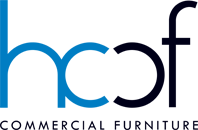Trestle tables were the most common tables in the West until the 16th century. These tables are characterized by two to three trestle supports. These trestle supports are then combined and linked together through a longitudinal piece. Boards are placed on top to finally complete one of the most popular tables to date. Tabletops are also used in some areas of the world.
According to history, trestle tables are of medieval origin. Romans and Greeks were reportedly very fond of using them in the 14th century. Though the modern day trestle tables we have are collapsible, those in the 14th century were more or less fixed or stationary. They were also mostly very long tables which have the capacity to hold countless number of dishes. During special gatherings and occasions, they are often covered with table runners or carpets.
Due to the heightened demand for longer trestle tables, they have evolved to become refectory tables after some time. Refectory tables are types of tables used for dining and during banquets and special gatherings. The only difference is that these tables have become considerably longer. They have also evolved in terms of design. They are characterized by circumferential stretchers that are positioned very low – almost touching the floor.
Trestle and refectory tables in the past were mostly made of wood. Wood was a very practical option for furniture material at that time as the resources were abundant and the construction process was something most carpenters were familiar with. Unlike furniture making nowadays though, furniture makers in the past did not make use of stains, polishes or sealants. Their own way of keeping their wooden trestle tables smooth and shiny involved the use of oily rags. The process is equivalent to modern day table polishing.
Nowadays, trestle and refectory tables are a common addition to a regular household’s set of furniture. They are used for various purposes including dining and display. Collapsible trestle and refectory tables are also popular choices for families who are fond of going on picnics. They can also be used during exhibitions and expos as temporary tables or booths. One of the advantages of trestle and refectory tables is that they can be kept and stored easily. They are also able to provide ample space with their wide and long tabletops. Unlike trestles and refectories in the medieval era, modern day versions of these tables can come in various materials including wood, aluminum and plastic. Contact HCCF for more info on Trestle Tables – we have an expert ready to assist.
